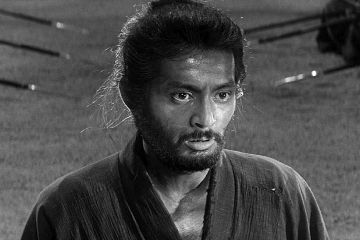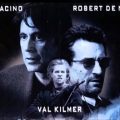Contents
The Legacy of Kaneto Shindo
Have you heard of Kaneto Shindo, a truly unique and brilliant Japanese film director? His recent passing, just as I was preparing to introduce his film “Onibaba” on this blog, is a great loss. This legendary work was not only a masterpiece as a movie but also remarkable in terms of effective use of music, which was composed by Hikaru Hayashi (he also died this year, unfortunately).
The Musical Genius: Hikaru Hayashi
Mr. Hayashi was famous for his prolific and versatile work, in addition to collaboration with Mr. Shindo. His roots were classical music, and he left many excellent orchestral, choral, and even opera pieces in that area. But also he was very keen in scoring music for films, especially in his elements in human-dramatic soundtracks, as heard in “Koi no Natsu,” “Akitsu Onsen,” “Hadaka No Shima,” etc. While these soundtracks may not be readily available in your country, you can find several masterpieces on YouTube.
“Onibaba”: A Daring Exploration of Human Psyche
In my view, the music of “Onibaba” represents Hikaru Hayashi’s most daring and experimental work. The film itself is equally bold, with a shockingly creepy narrative that delves deep into the human psyche, exploring themes of jealousy, desire, and covetousness. It’s not just a horror flick or a hideous folk tale of old Japanese taboos, but a psychological drama that suggests the damaging aspects and feelings that human beings have always grappled with.
Traditional Japanese Cinema: A Deep Dive into Human Instincts
Many excellent traditional Japanese movies went into depth and tried to depict the dark sides of human instinct, not to mention examples of Kurosawa’s or Masaki Kobayashi‘s. Naturally, these directors demanded music that equivalently reflects its deepness and complexity, not in a blatant way but in an allusive or imaginative way. You could call their expressions even “metaphysical.” Still, they are careful about articulating their stories as well. They would never indulge themselves in just “abstract films” which don’t take you anywhere. Momentarily, their expressions may look abstract, but as a whole, there exist stories that are so tightly constructed with clear themes that you are unlikely to get lost on the way. I think the combination of subdued ways of visual & sound expression and techniques of dramatic story-building made traditional Japanese movies and their soundtracks unique.
The Subtlety of Japanese Culture: “Iwanu Ga Hana”
There is a proverb that “Iwanu Ga Hana” (“The less said, the better”) in Japan. Aside from whether I like this word (honestly, I don’t, haha), we Japanese have been ingrained with this modesty and have appreciated it in our daily social life and creative world. Sometimes, this tendency could make it challenging to communicate with Japanese people as they come off as vague or even weird, but sometimes it works (at least I believe so), especially when it comes to time-based art such as filmmaking and music composition. That is because, as mentioned above, accomplished film directors and music composers clearly have a unique but effective methodology of story-building.
Continuing the Conversation on Traditional Japanese Art Forms
As this has been one of my vital interests in traditional Japanese art forms, including film soundtracks, hopefully, I will continue these kinds of topics. Lastly, I’d like to introduce Toru Takemitsu‘s “Harakiri” (directed by Masaki Kobayashi). While it sounds scary, as does “Onibaba,” this soundtrack reaches the height of the Japanese “silent” art form. Also, you will be amazed at how Mr. Kobayashi built the story dramatically throughout the movie.

|

|






